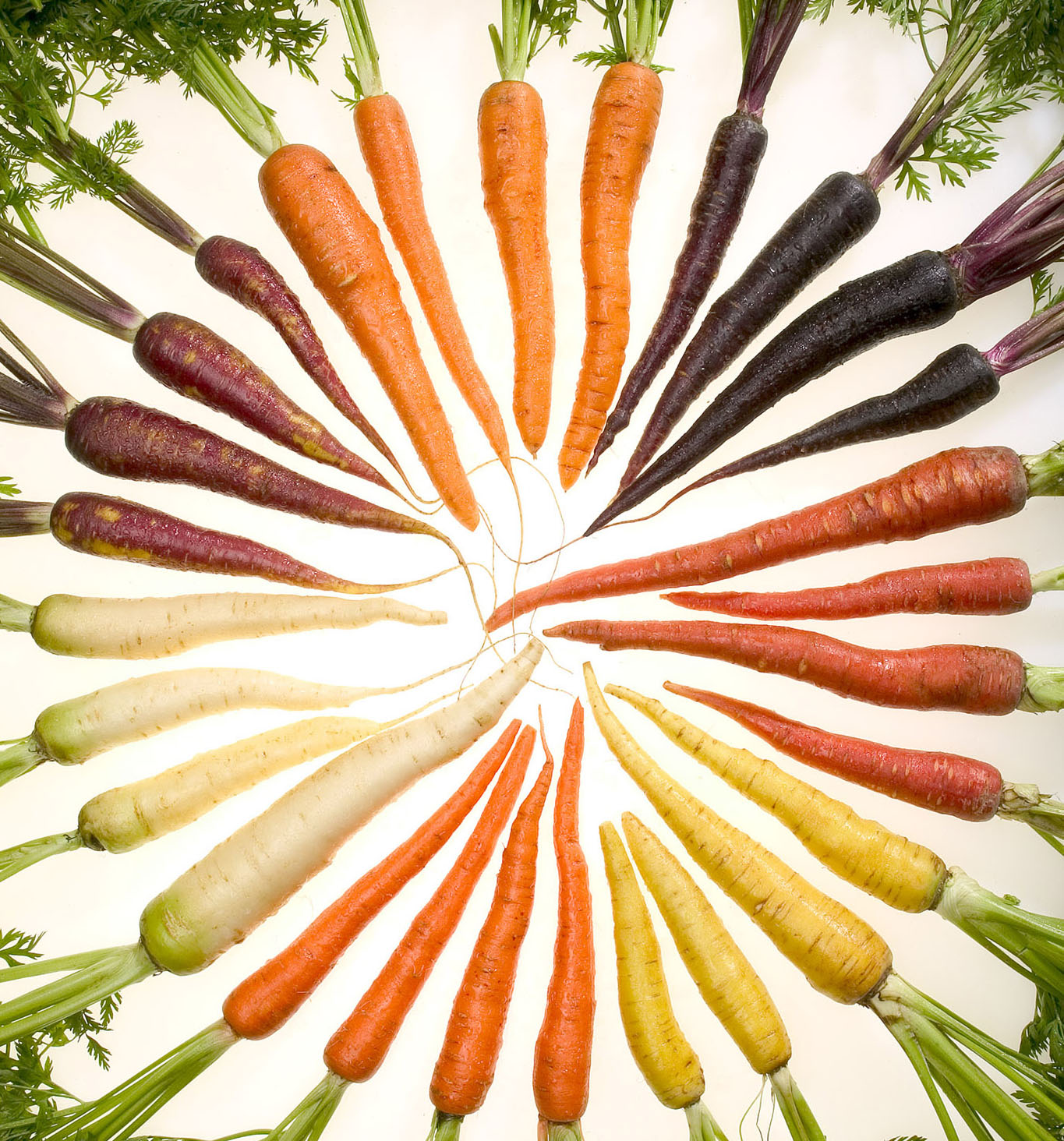Previously, I wrote about how even going organic for a week can be an effective detox, and later posted an
infographic of the most and least pesticide-contaminated foods. A cost-effective way to at least partially change to an organic diet is by growing your own food, but how can we grow food in containers, if land is not available?
 |
| Carrots need anywhere from 9-18 inches depth. |
Because there isn't unlimited space, root depth and plant spacing are important considerations.
Carrots and radishes can be planted as little as 2 inches (5cm) apart, while beets, onions and peas can be 3 inches (7.5cm) apart and spinach and beans can be 5 inches apart. Leafy lettuce, Swiss chard and potatoes can be planted 6 inches apart. Others, such as broccoli, eggplant, cherry tomatoes and cabbage, need 12 inches (1 foot, 30cm) between them. As for root depth, beets, leafy lettuce, onions, radish, spinach and Swiss chard need 9-12 inches of depth. Broccoli and cabbage need 12-14 inches; cherry tomatoes, eggplant and peas need 14-16 inches of depth. Beans, cucumbers and potatoes require much greater depths, of 16-18 inches. Outdoor containers should be at least 8-12 inches in diameter because smaller pots dry out much easier (really bad in a hot, dry climate such as most of Australia), but they could do fine in part shade. Leafy plants can be okay in partial shade, fruit-bearing plants need at least six hours - this includes eggplant, chilli and squash. Colour of containers should also never be ignored. Light colours reflect heat, dark containers absorb more heat, and thick wood is the best insulator (e.g. all the log houses in the Swiss alps). The tiny, hairlike feeder roots can be fried in the summer heat, or anytime heat in many parts of the world. Without feeder roots, the plant will wilt and die even if you're watering the soil.
In dry countries such as Australia,
water is almost always a concern. Plants with similar water needs should be grouped together. Organic matter in soil, mulch and water crystals can slow water loss, and self-watering pots can also stop water from drying out. Water should be considered even before planting; watering the day before planting as well as planting early in the morning are both advisable. It is best to water plants, even shallow-rooted herbs, thoroughly on an occasional basis than it is to sprinkle them every day. Watering in the morning can both keep them going all day while preventing fungus from growing overnight. Additionally, trees should be kept within 3 metres of height and width, with compact, thicker growth. Drought-tolerant fruits, which require less water, include figs, pomegranates, olives, grapes and mulberries. Vegetables that are productive for their water use are tomatoes, beans, cucumbers, squash, eggplants, capsicum (bell pepper), zucchini and pumpkins. Herbs with low water requirements include rosemary, thyme, sage, lavender and oregano.
While it takes some learning and often creativity, you can grow some of your own food! Whether you are a doomsday prepper or just want to save a little bit of money, it is worthwhile. Why let corporations make it increasingly harder for you to afford fresh food?

No comments:
Post a Comment